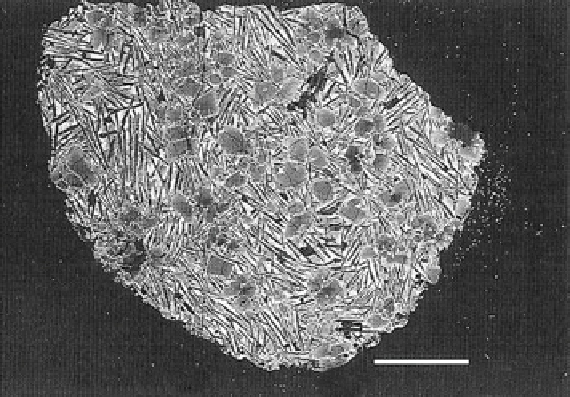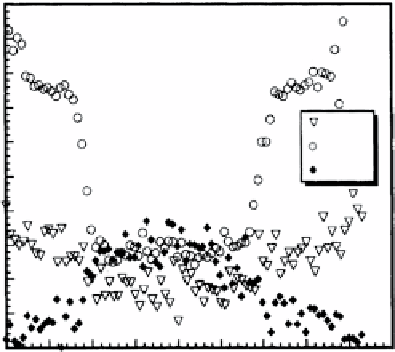Geology Reference
In-Depth Information
Angrite
0.61 g
Found December 13, 1987
1.0 × 0.7 × 0.5 cm
Weathering = A
isotopic values similar to, but distinct from, the HED group of meteorites.
Their Feo-rich and volatile depleted characteristics are reflected in the
Feo-rich clinopyroxene, fayalitic olivine, and calcic plagioclase. The low
concentrations of core-loving elements such as Ni, Co, and W suggest
they are from a small body that underwent core formation. Some have
proposed a link between angrites and the iVB irons, originating from a
relatively oxidized asteroidal parent body.
45
Type B Olivine
40
Rim
35
Rim
30
25
20
Core
Fa
15
10
0 0 00
150200
250
300
350
400
450
1
Type B Olivine
0.9
Rim
Rim
0.8
0.7
MnO
CaO
Cr
2
O
3
0.6
0.5
Core
0.4
0.3
0.2
0.1
0
0
50
100
150200
Distance (
µ
m)
250
300
350
400
450
0006
15KV
×19
1 mm
WD38
Plate 54
MiNERALogy
SigNiFiCANCE
The texture of LEW 87051 is dominated by a subparallel
arrangement of plagioclase laths, 0.02 mm wide and up to
0.3 mm long. The pyroxene is weakly pleochroic with a
purplish tint. Major phases are plagioclase (An
100
), olivine
(Fa
19
), a titanian fassaite pyroxene (with up to 8.5% Al
2
o
3
and 4.6% Tio
2
), and kirschsteinite.
The fine-grained texture of LEW 87051 indicates it
cooled rapidly, whereas at the same time it contains zoned
olivine crystals, the cores of which are not in equilibrium
with the surrounding fine-grained matrix (left and right,
[395]). This sample and its unique texture among angrites
likely formed by shallow melting on the parent body,
perhaps by impact processes.
References [394-399]






